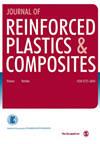铺层顺序对复合材料压力容器固化变形和精确预测的影响
IF 2.2
3区 材料科学
Q3 MATERIALS SCIENCE, COMPOSITES
引用次数: 0
摘要
复合材料缠绕压力容器的应用越来越广泛,固化过程中变形的大小会对使用性能产生重大影响,但对压力容器固化过程中变形的数值精确预测和实验验证研究较少。为了准确预测不同铺层角度对 T700S-12 K/4251A4B2 碳纤维/环氧复合材料制成的高压储氢容器圆柱形和圆顶形截面固化变形的影响。本文首次提出了 WCM-ABAQUS 分段压力容器精确建模方法,采用将环氧树脂化学收缩系数等效转换为热膨胀系数的方法,对不同铺层顺序下压力容器固化过程中的变形进行了有限元预测,并对不同铺层顺序下压力容器的变形值进行了对比分析。最后,对不同铺层顺序的压力容器进行了缠绕固化实验,将不同铺层顺序压力容器的固化变形实验值分别与有限元模拟值进行了比较,最小误差值为 13.07%。为准确预测压力容器固化过程的变形值提供了可靠依据,也为后续实验降低固化变形值提供了参考。本文章由计算机程序翻译,如有差异,请以英文原文为准。
Effect of layup sequence on cure deformation and accurate prediction of composite pressure vessels
The application of composite winding pressure vessels is becoming more and more widespread, and the magnitude of deformation during curing can have a significant impact on service performance, but there are fewer studies on the accurate prediction of the numerical and experimental validation of the deformation during the curing process of pressure vessels. To accurately predict the effect of different angles of layup on the curing deformation of high-pressure hydrogen storage vessels made of T700S-12 K/4251A4B2 carbon fiber/epoxy composites in cylindrical and dome sections. In this paper, WCM-ABAQUS segmented pressure vessel accurate modeling method is proposed for the first time, using the method of converting the chemical shrinkage coefficient of epoxy resin into thermal expansion coefficient equivalently, the finite element prediction of the deformation of the pressure vessel during the curing process in different layup sequences was carried out, and the deformation values of the pressure vessel in different layup sequences were analyzed comparatively. Finally, the winding curing experiments were carried out on pressure vessels with different layup sequences, and the curing deformation values of the experimental tests on pressure vessels with different layup sequences were compared with the finite element simulation values, respectively, and the minimum error value 13.07%. It provides a reliable basis for accurately predicting the deformation value of the pressure vessel curing process, and also provides a reference for subsequent experiments to reduce the curing deformation value.
求助全文
通过发布文献求助,成功后即可免费获取论文全文。
去求助
来源期刊

Journal of Reinforced Plastics and Composites
工程技术-材料科学:复合
CiteScore
5.40
自引率
6.50%
发文量
82
审稿时长
1.3 months
期刊介绍:
The Journal of Reinforced Plastics and Composites is a fully peer-reviewed international journal that publishes original research and review articles on a broad range of today''s reinforced plastics and composites including areas in:
Constituent materials: matrix materials, reinforcements and coatings.
Properties and performance: The results of testing, predictive models, and in-service evaluation of a wide range of materials are published, providing the reader with extensive properties data for reference.
Analysis and design: Frequency reports on these subjects inform the reader of analytical techniques, design processes and the many design options available in materials composition.
Processing and fabrication: There is increased interest among materials engineers in cost-effective processing.
Applications: Reports on new materials R&D are often related to the service requirements of specific application areas, such as automotive, marine, construction and aviation.
Reports on special topics are regularly included such as recycling, environmental effects, novel materials, computer-aided design, predictive modelling, and "smart" composite materials.
"The articles in the Journal of Reinforced Plastics and Products are must reading for engineers in industry and for researchers working on leading edge problems" Professor Emeritus Stephen W Tsai National Sun Yat-sen University, Taiwan
This journal is a member of the Committee on Publication Ethics (COPE).
 求助内容:
求助内容: 应助结果提醒方式:
应助结果提醒方式:


